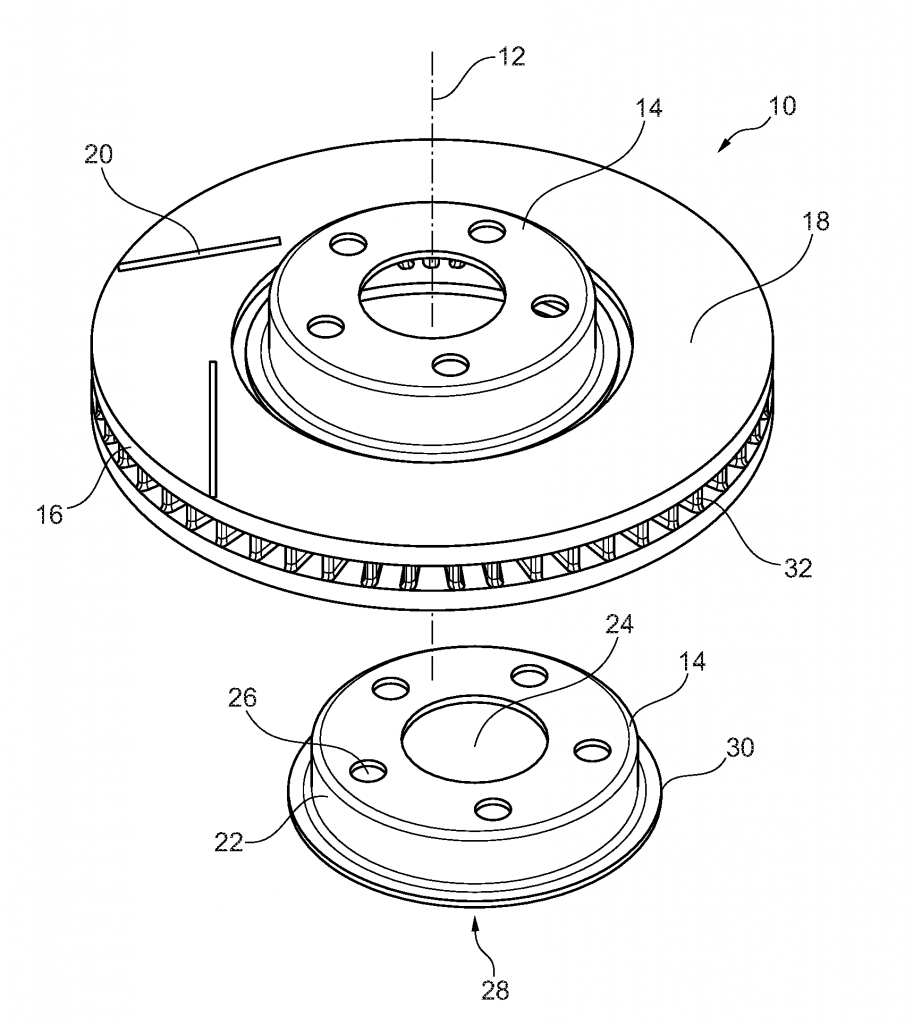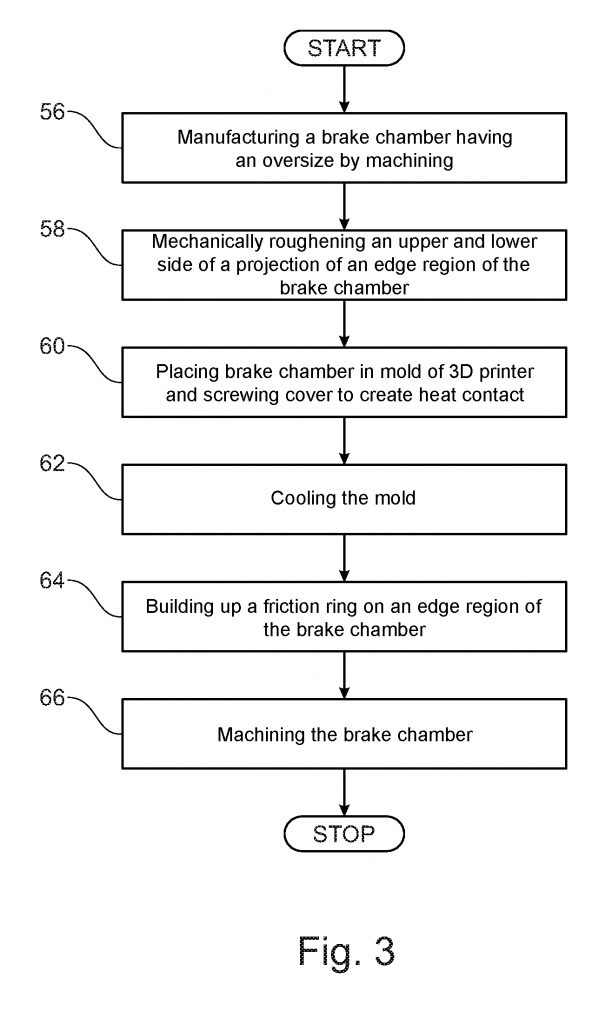Ford Global Technologies LLC, the patent management and copyrighting arm of the Ford Motor Company, has filed an application detailing a method of making lightweight brake discs using 3D printing.
The method described is laser deposition welding, a relative of laser metal deposition (LMD), capable of adding new material to pre-fabricated substrate.

The forefront of innovation
Determined to run at the forefront of innovation, over the years, Ford has invested a lot of time and money into the development and adoption of additive manufacturing processes. Back in 2015, the company took part in Carbon3D’s early access program for CLIP 3D printing technology. Ford also has its hands on an early Infinite Build System from Stratasys.
More recently, the company promoted Ford Smart Mobility boss, Jim Hackett to CEO in charge of ramping up advanced manufacturing and, early 2018, it led a $65 million funding round for Massachusetts 3D printer manufacturer Desktop Metal.
Reinventing the wheel
Brake discs are typically made from cast iron, and machined to the desired design. However, Ford is looking to use aluminum, which has the poential to the cut the weight of its cast iron counterpart by 50%. lightweight replacement.
“Such a brake disk, however,” as detailed by the patent application, “has significant disadvantages.”
“On the one hand, aluminum alloys, in contrast to gray cast iron material, do not have the necessary abrasion resistance, also the melting point of aluminum-cast iron alloys lies below 650° C.”
In a typical automotor and sport (AMS) test, repeated brake maneuvers generate temperatures exceeding 750° C, which would liquefy an all-aluminum brake disk. Aluminum, therefore, needs some kind of reinforcement. And the challenge then is maintaining a balance between the conductive and light properties of aluminum, when combined as an alloy.
The best of both worlds
The document specifies a 6 part process relying on first machining a brake chamber. Once appropriately prepared, a friction ring is added to the disc via laser depostion welding.
As the inventors state: “During the fusion metallurgical building up of the friction ring by using a laser deposition welding process or a 3D-printing process, the rapidly solidified aluminum alloy in powder form maintains its favorable mechanical properties,”
“In this way, for example a high level of thermal stability and a high level of abrasion resistance of the friction ring can be achieved so that an after-coating of the friction ring can be dispensed with.”

Ford’s “Hybrid lightweight brake disk and production method” was filed with a priority of January 20, 2017. As of the time of publication, the company now has a patent pending for the method, dated January 22, 2018.
The persons credited with inventing the brake disc manufacturing method are all employed by Ford Motor Company in Germany. Paul Zandbergen Zandbergen, Supervisor of Advanced Chassis Technologies & BEV Chassis Architecture; Maik Broda in Advanced Materials & Processes; Raphael Koch, Additive Manufacturing Research Engineer; and Clemens Verpoort, a Technical Specialist in Thermal Spraying.
For more of the latest additive manufacturing news releases subscribe to the 3D Printing Industry newsletter, like us on Facebook and follow us on Twitter.
Sign up to 3D printing jobs for new opportunities in this field.
Featured image shows a diagram of a brake disk. Image via Hybrid lightweight brake disk and production method”



